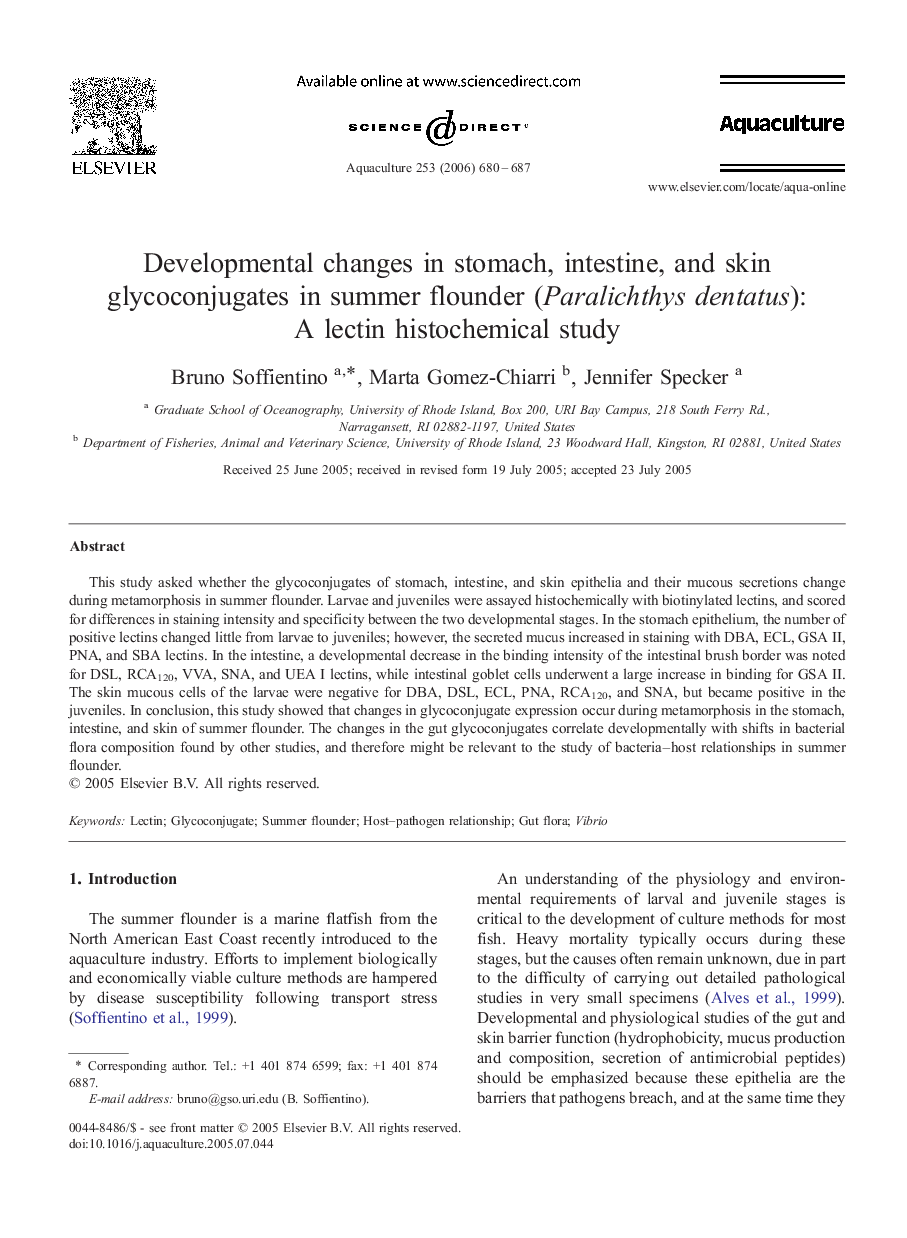| Article ID | Journal | Published Year | Pages | File Type |
|---|---|---|---|---|
| 2426274 | Aquaculture | 2006 | 8 Pages |
This study asked whether the glycoconjugates of stomach, intestine, and skin epithelia and their mucous secretions change during metamorphosis in summer flounder. Larvae and juveniles were assayed histochemically with biotinylated lectins, and scored for differences in staining intensity and specificity between the two developmental stages. In the stomach epithelium, the number of positive lectins changed little from larvae to juveniles; however, the secreted mucus increased in staining with DBA, ECL, GSA II, PNA, and SBA lectins. In the intestine, a developmental decrease in the binding intensity of the intestinal brush border was noted for DSL, RCA120, VVA, SNA, and UEA I lectins, while intestinal goblet cells underwent a large increase in binding for GSA II. The skin mucous cells of the larvae were negative for DBA, DSL, ECL, PNA, RCA120, and SNA, but became positive in the juveniles. In conclusion, this study showed that changes in glycoconjugate expression occur during metamorphosis in the stomach, intestine, and skin of summer flounder. The changes in the gut glycoconjugates correlate developmentally with shifts in bacterial flora composition found by other studies, and therefore might be relevant to the study of bacteria–host relationships in summer flounder.
